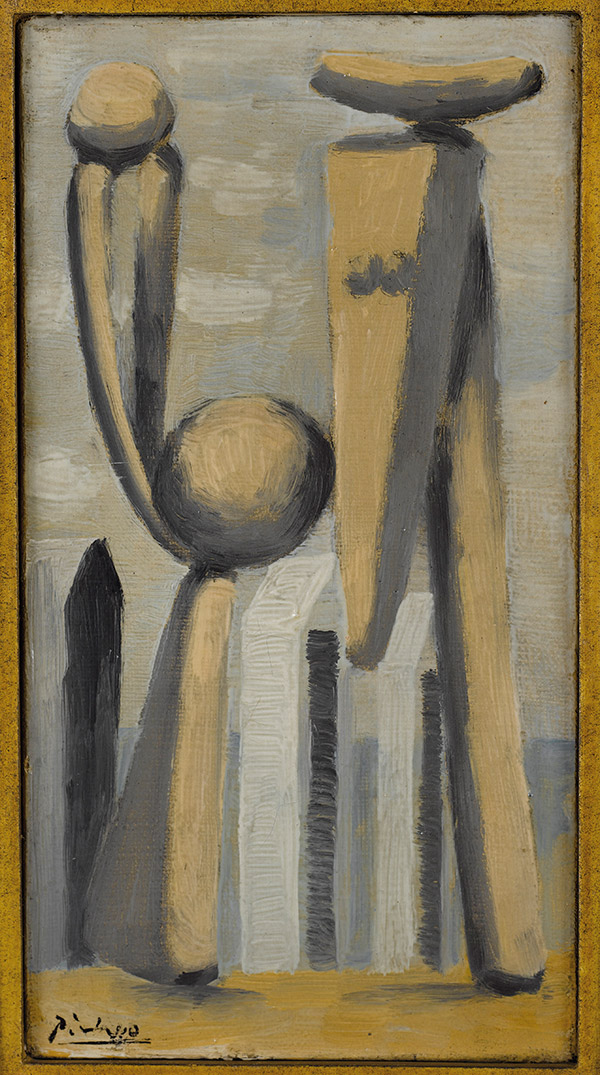Second individual exhibition at Valentine
In March 1933 Dudensing presented a second solo exhibition, 7 Outstanding Paintings by Picasso, relying largely on his inventory and loans from clients, allowing him to avoid the high cost of overseas shipping. The exhibition catalogue noted that six of the works were being shown in this country for the first time. Two were from 1905 which, as Ralph Flint explained in his Art News review, “[were] relatively simple to understand today.” By comparison he described two later works, Deux Nus, 1920 (possibly Z.IV,56) and Trois Baigneuses, 1920 (Z.IV,169), as “bitter pills to swallow for those with conventional tastes in figure painting.”[i]
The most startling of the group was undoubtedly The Studio (Z.VII,142). Rosenberg had acquired this large canvas soon after it was completed in 1928 and showed it that year at his Paris gallery.[ii] By December 1931 the painting was at the Valentine Gallery. In the 1933 exhibition catalogue Dudensing heralded the work while positioning Picasso as a great master:
It is the culminating work of a period, 1921-1928, indicating all the knowledge he acquired through those years of experience. It shows Picasso to be a great colourist in the sense that at every step he knows the plastic value and relationship of each colour as he used it. As a composition it has the austerity and equilibrium of a mural by Giotto.[iii]
Dudensing sent the painting to Chicago in 1934 for a summer exhibition at the Renaissance Society.[iv] Despite his promotional efforts he was unable to sell the piece until early 1935 when he convinced one of his biggest clients, Walter P. Chrysler, Jr., to buy it as a gift for the Museum of Modern Art.





 índice
índice